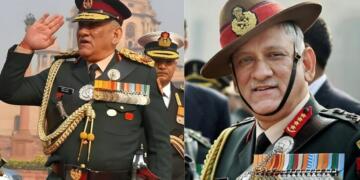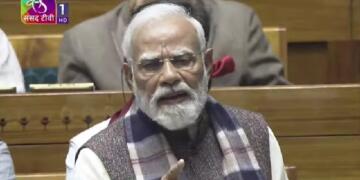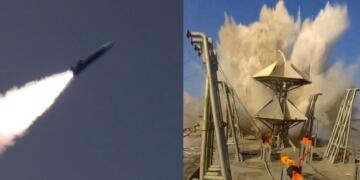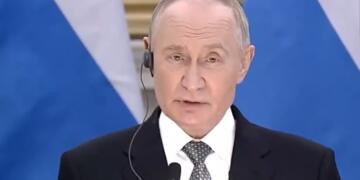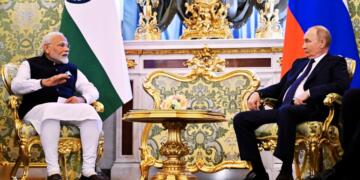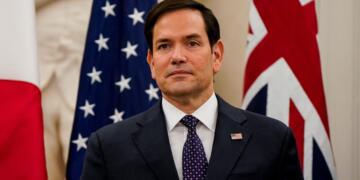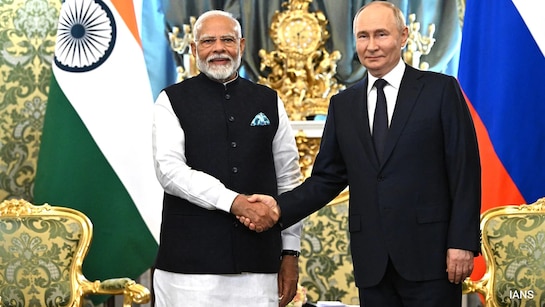India must continuously strengthen its economic resilience to guard against external shocks from countries weaponizing trade, technology, or finance. This requires strategic diplomacy, global partnerships, diversified supply chains, defense alliances, alternative payment systems, and enhanced domestic manufacturing. India’s policies must blend cooperation, humanitarian aid, and mutual development to build enduring international goodwill while securing long-term economic and geopolitical independence.
Russia is under an unprecedented 16,000 Western sanctions—the highest imposed on any nation. These target individuals (11,000), entities (4,600), and assets like aircraft and ships. European airspace is closed to Russian planes, and hundreds of Western corporations have exited the country. In theory, this should have dismantled Russia’s economy, crippled its military, and sent the ruble crashing.
Yet, Russia’s economy grew 3.6 percent in 2023 and 4.3 percent in 2024—well above most G7 nations. Shelves in Russian stores remain stocked, prices are stable, and even Western luxuries like iPhones are still available. This resilience has shocked Western policymakers and exposed the limits of sanctions in an interconnected global economy.
How Russia Beat the Odds
Russia’s ability to withstand this economic assault is no accident—it’s the outcome of a pre-planned, multi-pronged national strategy launched well before the Ukraine conflict. This includes:
Wartime Economy: Redirecting resources toward military production and domestic self-reliance. Military spending now exceeds 6% of GDP and will soon surpass social spending.
Gold Standard Move: Pegging the ruble to gold at 5,000 rubles per gram in 2022 stabilized the currency. Russia mined 324.5 metric tons of gold in 2023, making it the second-largest producer globally.
Trade Diversification: Russia shifted its economic axis toward Asia. Trade with China reached $240 billion in 2023, up 124% since 2020. Oil exports to China surged, making it Russia’s top energy buyer.
Domestic Substitution: Russia increased local production of food, machinery, and electronics to reduce dependency on Western imports.
Technology Workarounds: Russia imported consumer-grade chips, utilized third-party traders for military components, and leveraged trade ties with countries like China, India, and Turkey to bypass high-tech sanctions.
Alternative Finance: The country steadily reduced its dollar reserves since 2013, built reserves in yuan and gold, and promoted local-currency trade.
Strategic Diplomacy: Russia deepened its ties with China, India, Iran, and the UAE, aligning itself with non-Western powers in a multipolar world order.
Public Resilience: The Russian public has largely supported the government, and services continue uninterrupted despite sanctions.
Some sanctions even backfired. For example, British luxury car exports to Kazakhstan—a transit point for Russian elites—skyrocketed by 5,190%, revealing how easily global sanctions can be circumvented with regional rerouting.
What India Must Learn
India is not under sanctions—but it must prepare for future disruptions, whether they stem from financial coercion, technological restrictions, or geopolitical volatility. As a rising power, India’s vulnerability lies in overdependence on select trade partners, imported technology, and foreign payment systems.
India must build a sanctions-proof economic and strategic framework, taking inspiration from Russia’s resilience but adapting it to India’s own civilizational, democratic, and economic realities.
1. Leverage Global South, BRICS & Regional Blocs
India should solidify its leadership of the Global South through robust engagement with regional and multilateral groupings:
SCO (Shanghai Cooperation Organisation): Use it to build connectivity, secure energy corridors from Central Asia, and expand regional trade partnerships with Russia and China.
BRICS & BRICS+: Strengthen the New Development Bank, promote local currency trade, and develop BRICS alternatives to SWIFT and Western financial institutions.
South-South Cooperation: Offer India’s proven strengths—IT, pharma, fintech, digital public infrastructure—as development tools to partner countries in Africa, Latin America, and Southeast Asia.
Voice of the Global South Platform: Institutionalize it as a regular diplomatic forum to challenge Western dominance in global rule-setting.
2. Deepen Regional Diplomacy with Economic Integration
India’s diplomacy must become economically actionable. Key strategies include:
Neighbourhood First: Translate goodwill into hard infrastructure—roads, power grids, cross-border trade with Nepal, Bhutan, Bangladesh, and Sri Lanka.
Act East / Look East: Accelerate trade integration with ASEAN, Japan, and Korea. India must anchor regional supply chains disrupted by China’s unpredictability.
IMEC (India-Middle East-Europe Corridor): Use it to rival China’s Belt and Road. Invest in ports, dry docks, railways, and energy logistics connecting the Arabian Peninsula to Europe.
3. Scale Up Manufacturing & Policy Reform
To reduce import dependence and build resilience, India must:
Supercharge ‘Make in India’ into ‘Secure in India’, targeting key sectors—semiconductors, defense equipment, APIs, electronics, EVs, and renewables.
PLI 2.0 (Production-Linked Incentives): Transition to an ecosystem-based cluster model—encouraging supply chains, innovation hubs, and workforce development together.
Industrial and Tax Reform: Create a more predictable, simplified, and incentive-based policy regime to attract long-term manufacturing investment.
4. Build Financial and Trade Autonomy
India should not be caught off guard by any future financial weaponization. Steps include:
Rupee Trade Expansion: Pilot projects with Russia and UAE should scale up. India should sign more bilateral agreements for local-currency trade settlements.
Alternative Payment Systems: Co-develop BRICS or SCO-level financial systems insulated from dollar or euro-dominated networks.
Gold Reserves & Digital Currency: Build physical gold reserves and accelerate rollout of CBDC (Central Bank Digital Currency) for cross-border B2B settlements.
5. Empower Human Capital and Innovation
India’s most powerful weapon is its people. A future-ready strategy must include:
STEM & Skilling: Expand STEM-focused universities, skill-development missions, and industry-academia ties to prepare youth for future sectors like AI, robotics, defense, and biotech.
Domestic R&D Ecosystems: Invest in Indian innovation—not just through government labs, but also startup sandboxes and strategic incubators.
Reverse Brain Drain: Attract global Indian talent with research funding, startup visas, and tax incentives for returning professionals.
‘Skill for Diplomacy’ Programs: Train people in languages, law, global trade, and strategic thinking to build a cadre of future negotiators and diplomats.
Conclusion: Towards a Multipolar, Self-Reliant India
Russia’s defiance of Western sanctions offers more than a geopolitical case study—it’s a template of national resilience. While India’s situation is very different, the principles apply: reduce dependence, diversify relationships, prepare for shocks, and build internal strength.
India must act now—not when the crisis strikes. With the right mix of trade diversification, regional leadership, manufacturing strength, tech independence, and strategic diplomacy, India can future-proof itself against coercion and assert its rightful place as a civilizational power in a multipolar world.



